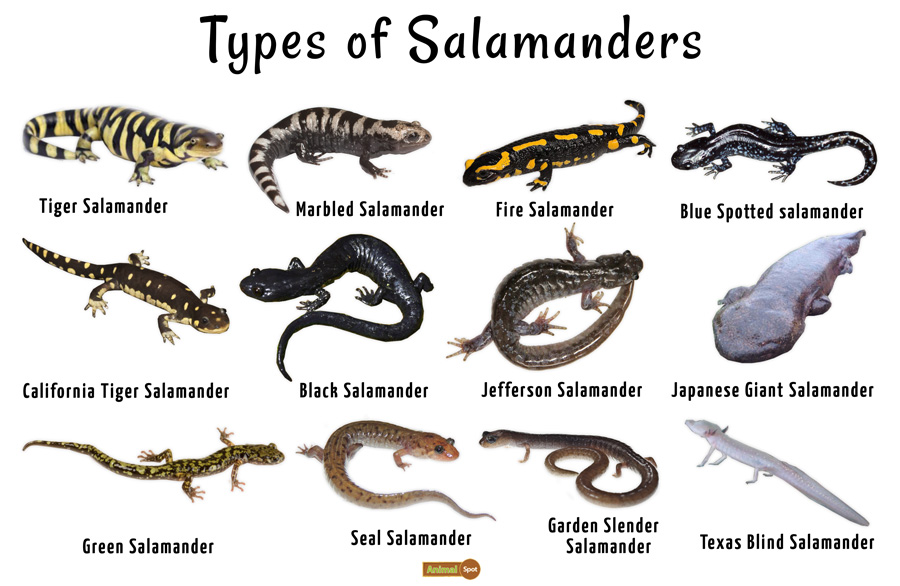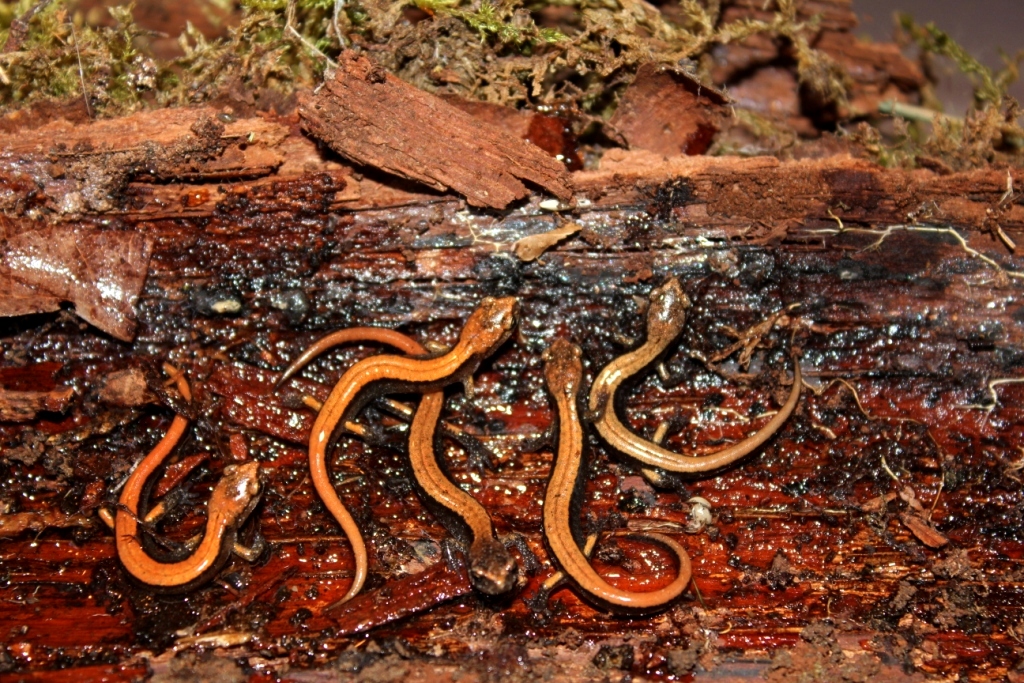/northern-red-salamander-on-rock-520077654-ba6b66f08ddc43ecbd1d62583071c539.jpg)
11 Surprising Facts About Salamanders
Salamander Scientific Classification Kingdom Animalia Phylum Chordata Class Amphibia Order Caudata Family Salamandroidea Scientific Name Caudata Read our Complete Guide to Classification of Animals. Salamander Conservation Status Near Threatened Salamander Locations Asia Central-America Eurasia Europe North-America South-America Salamander Facts

Salamander Facts, Habitat, Life Cycle, Diet and Pictures
Salamanders are a group of amphibians typically characterized by their lizard-like appearance, with slender bodies, blunt snouts, short limbs projecting at right angles to the body, and the presence of a tail in both larvae and adults. All ten extant salamander families are grouped together under the order Urodela from the group Caudata.

Salamanders Maymont Foundation
The Caudata are a group of amphibians containing the extant salamanders (the order Urodela) and all extinct species of amphibians more closely related to salamanders than to frogs.

Robin Loznak Photography Band of salamanders
The earliest crown-group salamander was the cryptobranchid Chunerpeton tianyiensis, which was discovered in the Middle Jurassic of Inner Mongolia, dated at 161 mybp. The karaurids are another ancient group of salamanders (see Fig. 1.1). They are known presently from a few fossils from the Upper Jurassic of Kazakhstan.

Competing Evolutionary Forces Drive Rapid Evolution of Salamander Coloration
Plethodontidae, or lungless salamanders, are a family of salamanders. [1] [2] Most species are native to the Western Hemisphere, from British Columbia to Brazil, although a few species are found in Sardinia, mainland Europe south of the Alps, and South Korea. In terms of number of species, they are by far the largest group of salamanders. [3]

It’s Salamander Season! « NORTHWEST WILDLIFE ONLINE
The Mole Salamanders are a group of approximately 30 existing species, all currently in a single genus (Ambystoma). These salamanders are endemic to North America, and are characterized by stout bodies, moderate size, and a tendency to live in burrows, reaching for the water only to breed, hence why the name "mole salamanders".

Pin by Blue Sky on Wildlife Family Grouping Salamander, Reptiles and amphibians, Tiger
1. They are a diverse group of organisms. Salamander diversity encompasses a wide range of species with varied characteristics and adaptations. Salamanders belong to the order Caudata and can be found in different parts of the world, including North America, Europe, Asia, and even some parts of Africa.
/155288633-56a006855f9b58eba4ae8bb7.jpg)
Tout ce que vous devez savoir sur les tritons et les salamandres
Amphibians / By Vy Nguyen Salamanders are a type of amphibians. They look like lizards and they live in moist habitats or near water. They live in moist woodlands, marshes, grasslands, and other habitats under leaves and rocks. Salamanders come in different colors such as black, yellow, and green. They have 4 legs and a thick long tail.

What is a group of salamanders called? SIMILAR BUT DIFFERENT IN THE ANIMAL KINGDOM
Resembling small lizards, salamanders are a group of tailed amphibians that are related to frogs. Of more than 6,500 existing species of amphibians, salamanders, and newts total more than 400 living species. They represent some of the most fantastic and diverse forms of life on Earth.

Plethodon yonahlossee, the Yonahlossee salamander, largest of the woodland salamander group
Salamanders are a group of amphibians typically characterized by their lizard -like appearance, with slender bodies, blunt snouts, short limbs projecting at right angles to the body, and the presence of a tail in both larvae and adults. All ten extant salamander families are grouped together under the order Urodela from the group Caudata. [2]

Maryland Biodiversity Project Spotted Salamander (Ambystoma maculatum)
First published 18 December 2020. Two new species of burrowing salamanders have been described from the border of Ecuador and Colombia, one from near the Dracula Reserve and another which is known only from a single specimen held in the Museum's collections and has never been seen in the wild. Salamanders are a diverse group of amphibians found.

U.S. Restricts Movement of Salamanders, for Their Own Good The New York Times
Amphibians are a group of tetrapod vertebrates that include modern-day frogs and toads, caecilians, and newts and salamanders. The first amphibians evolved from lobe-finned fishes approximately 370 million years ago during the Devonian Period and were the first vertebrates to make the move from life in water to life on land.

It’s Salamander Mating Season Migration Across Burlington's King Road John Bkila
salamander, (order Caudata), any member of a group of about 740 species of amphibians that have tails and that constitute the order Caudata. The order comprises 10 families, among which are newts and salamanders proper (family Salamandridae) as well as hellbenders, mud puppies, and lungless salamanders.

How Many Species Of Salamanders Are There PAROTE
A group of salamanders is called a herd or congress. What is the largest salamander? The largest salamander is the Chinese giant salamander (Andrias davidianus). It can be up to 6 feet long! Sadly, they are endangered and very few live long enough to reach that size.

13 species of salamanders and newts YouTube
Salamanders are amphibians that belong to the order Urodela. Living salamanders (Figure 29.3. 1) include approximately 620 species, some of which are aquatic, other terrestrial, and some that live on land only as adults. Adult salamanders usually have a generalized tetrapod body plan with four limbs and a tail.

Salamander Facts Missouri Department of Conservation
amphibian, (class Amphibia), any member of the group of vertebrate animals characterized by their ability to exploit both aquatic and terrestrial habitats.